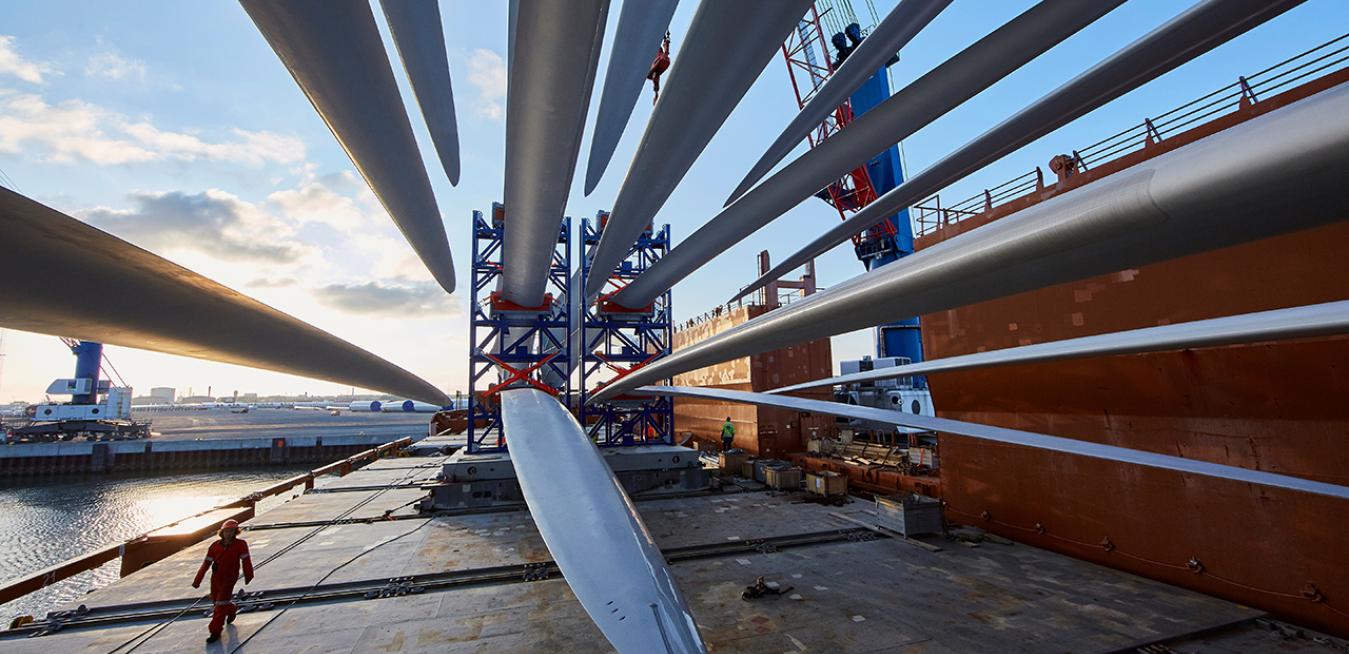TIPPING POINT
GE has used 3D printing to make parts for jet engines and gas turbines. It now wants to apply additive manufacturing to the way wind turbine blades are made. GE Renewable Energy and the U.S. Department of Energy set up a partnership last month that will 3D-print turbine blade tips that could be lighter and stiffer compared to current designs, and even recyclable.
Fit to print: In a vigorous wind, the last 10 to 15 meters of a spinning wind turbine blade can approach one-quarter of the speed of sound. These sections also capture as much as 40% of the wind energy that spins the generator. That’s why they are the focus of this 25-month, $6.7 million project. GE and its partners will print a full-size blade tip assembled from a 3D-printed, skeleton-like structure, and covered with thermoplastic skin. The GE team and its partners, the Oak Ridge National Laboratory and the National Renewable Energy Laboratory, will test the structural properties of one tip in a lab and install another three tips on a wind turbine. GE Renewable Energy’s subsidiary LM Wind Power, which makes blades for onshore and offshore turbines, could eventually use the technology on an industrial scale.
Click here to find out more.

ADVANCED POWER
How should fast-growing economies in Asia balance their rapidly expanding need for electricity with their goal of cutting emissions? Urban density and geography make large-scale wind and solar farms difficult here, but Malaysia may have an answer. Southern Power Generation turned to GE Gas Power’s advanced turbines, which can spin natural gas into record amounts of lower-carbon electricity. This month SPG will become the first power producer in the world to use a pair of 9HA.02 turbines to generate electricity.
Gas for growth: It’s welcome news for Malaysia, which is targeting a 45% reduction in CO2 emissions by 2030. The SPG’s plant is located in Pasir Gudang, an industrial city at the southern tip of Malaysia’s peninsula, just a few miles from Singapore. It will serve some 3 million people living in the area. In general, the carbon footprint of a natural gas power plant can be 60% lower than that of a coal plant, according to a recent report published by GE.
Click here to learn more about how Malaysia is working to reduce emissions.
COOLEST THINGS ON EARTH ?
1. Repairing Livers
Cambridge scientists studying liver disease have found they can repair damaged bile ducts with transplanted gallbladder cells they grew in the lab.
2. Vaccine Advances
Researchers studying messenger RNA (mRNA) vaccines, the tech behind COVID-19 immunizations, moved a step closer to using mRNA as immunotherapy against cancers.
3. Dream On
Experiments at four universities found that people in rapid-eye-movement (REM) sleep, when most dreaming occurs, can interact with researchers, answer questions and even do simple math in real time.
Learn more here about this week’s Coolest Things on Earth.
— QUOTE OF THE DAY —
“Additive manufacturing can bring a step change in cost and performance competitiveness in the wind industry and help GE Renewable Energy support our customers in driving the energy transition farther and faster.”
— Matteo Bellucci, technology innovation leader with GE Renewable Energy
Quote: GE Reports. Images: LM Wind Power, GE Gas Power.





